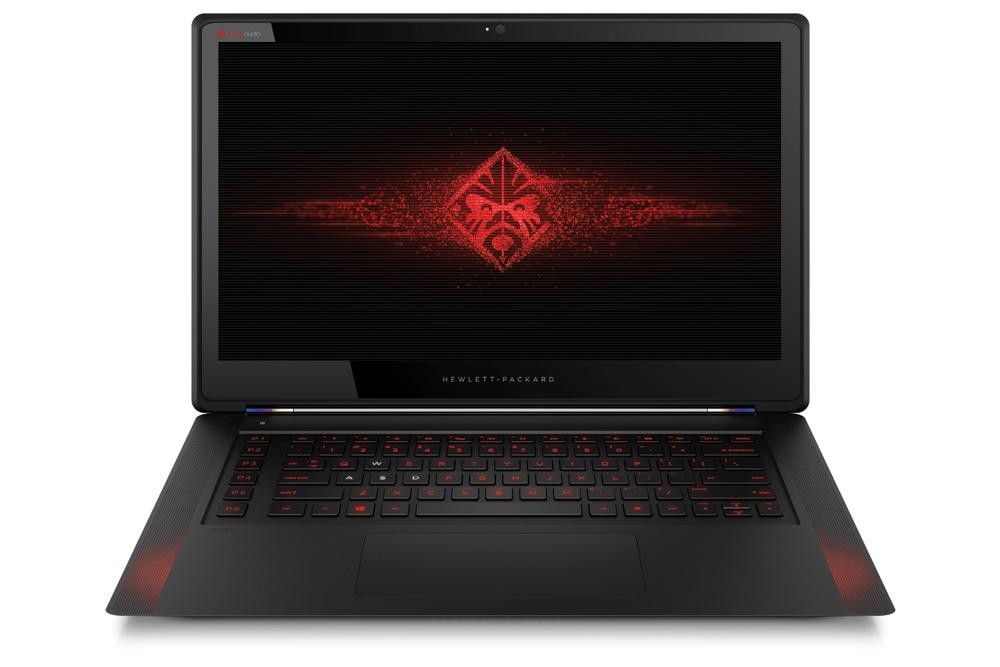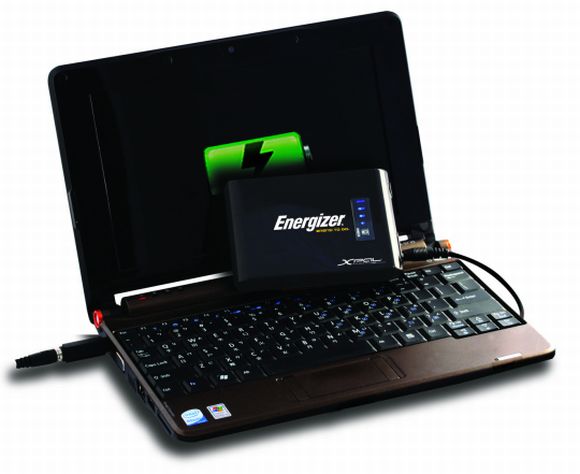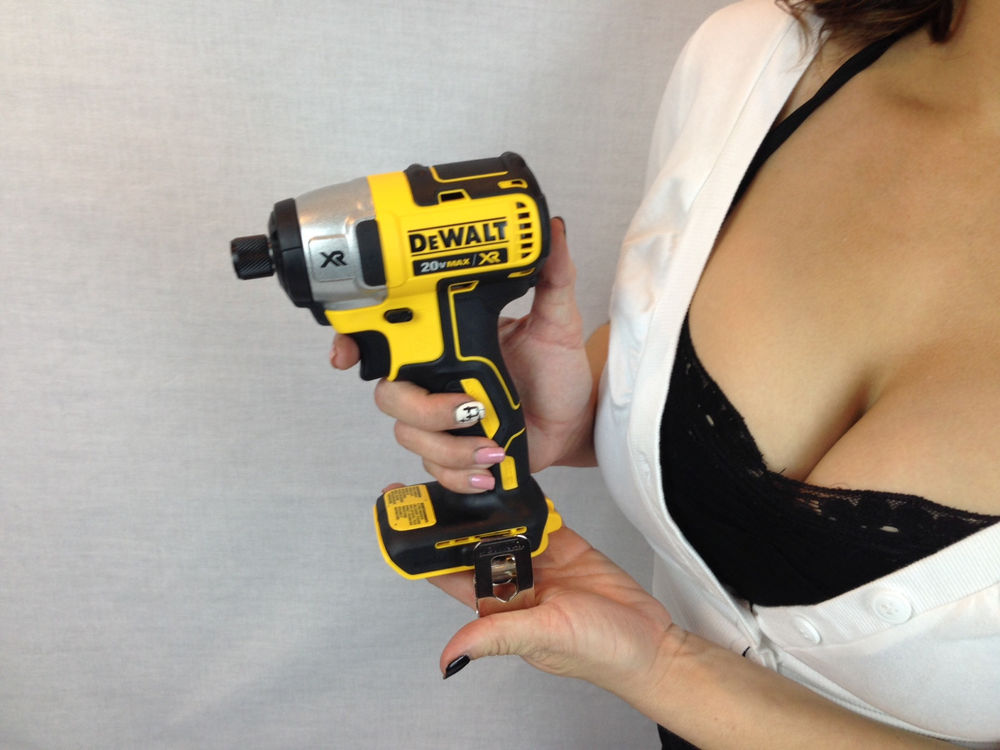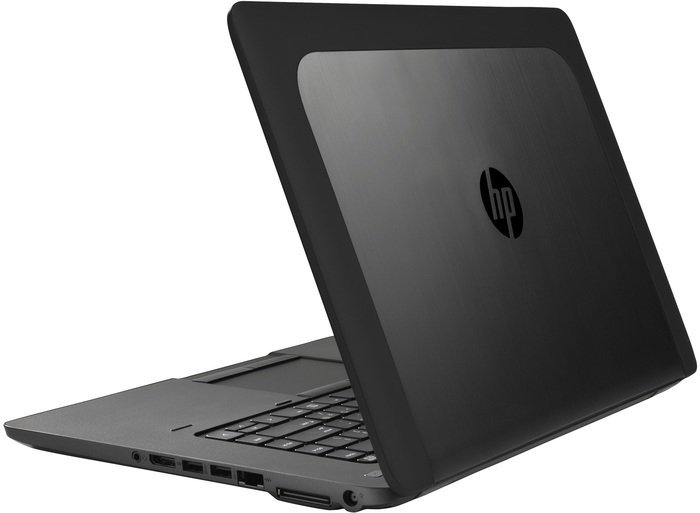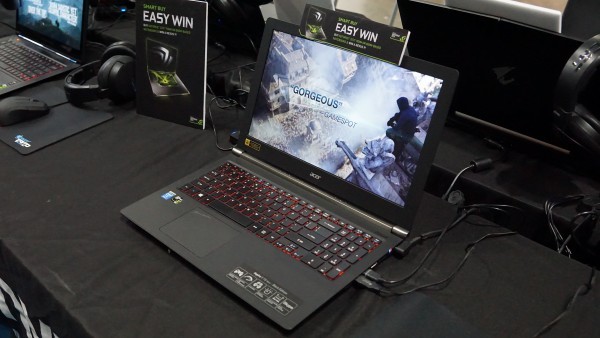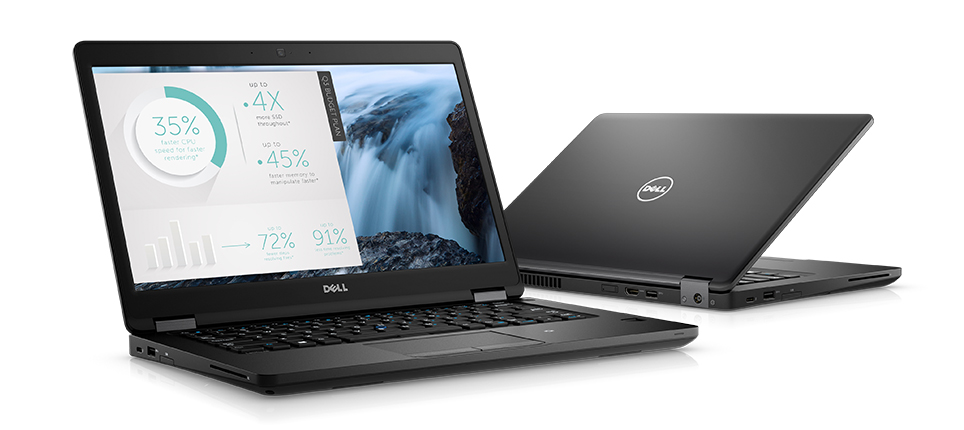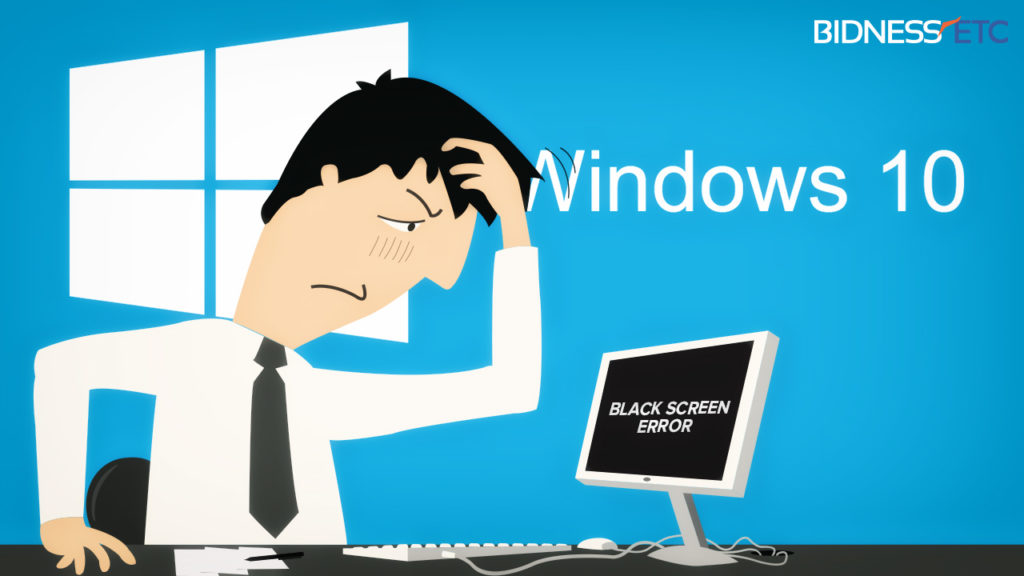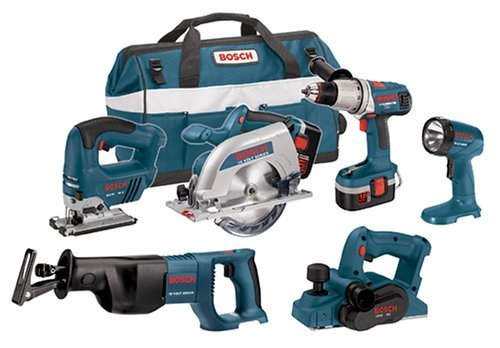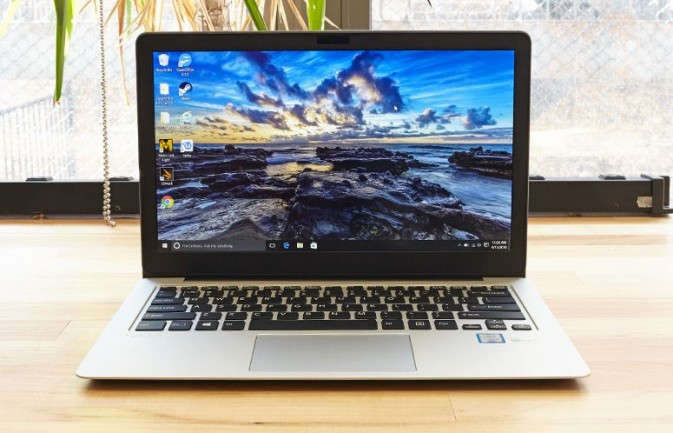Acer predator Triton: Game laptop so neat that they moved the touchpad
Not all predators are heavy beasts, at least not to mention Acer. The company has just launched the predator Triton 700, the first in its new thin gaming laptop line. Will be launched in August for the $2999 starting price, Triton is the movement of almost no 0.74-inch framework – to compete directly with Razer, Alienware and MSI. But Poseidon more to go for it just its slim chassis.
So let’s address the elephant in the room — the touchpad. The input device has been upended to the top of the keyboard deck and transformed into a peek-a-boo panel. In order to make room for the flashy design, the keyboard has been pushed down the deck, eliminating the palm rest.
In practice, it’s a touchpad. The clear Gorilla Glass SR plate delivered quick and accurate response. I did a few pinch-zooms and some three-finger taps and flicks. In order to launch a program, I just had to double tap on the icon. However, I couldn’t for the life of me figure out how to do left and and right click. The actual pad is smaller than it seems. When I tried to tap and swipe on edges of the glass where the fans were, I got no response. As cool as the plate looks, I can’t imagine trying to use it to bang out a review or do any serious work without plugging in a mouse.
At 5.7 pounds, 0.74 inches thick, the Triton 700 is gunning for the likes of the Razer Blade, MSI Stealth Pro and Asus ROG Strix GL50VS-DB71. It’s outfitted with an Intel Core i7 processor with up to 32GB of RAM. Acer reps hinted that the components are overclockable, which suggests that we’re looking at a 2.8-GHz Intel Core i7-7820HK CPU. The system will also feature an Nvidia Geforce 10-series GPU and a pair of NVMe PCIe SSDs in RAID 0 configuration.
If that’s not enough bells and whistles for you, the laptop will also feature a backlit mechanical keyboard that Acer says as 1.4 millimeters of key travel. To keep things cool, Acer’s added five heat pipes and two of its proprietary AeroBlade 3D fans which deliver 35 percent more airflow than competing systems according to the company.
Thanks to its Nvidia GPU, the Triton 700 is VR ready. Just plug in an Oculus Rift or HTC Vive and you’re ready to go. And while you’re getting up close and personal with various baddies in VR space, spectators can watch the action on the 15.6-inch 1920 x 1080 panel with Nvidia G-Sync technology.
All in all, the Predator Triton is a welcome departure from Acer’s typical massive systems. I am eager to get more hands-on time with the touchpad and see how those fans hold up against a few hours of frantic running and gunning. One thing’s for sure, the thin-and-light gaming laptop with Acer as07b72 laptop battery market has just gotten a lot more interesting.
Ultrabook-battery.net launched the latest notebook power adapter, laptop battery products
Ultrabook-battery.net, a global laptop battery and adapter from the 1998 operating dealer, has recently launched its latest series of branded notebook power adapter, laptop batteries. Replacement of batteries and adapters, the company introduced the manufacturer to ensure that. Owners said that buyers can now find all the top brands of batteries and adapters, such as Acer, SONY, HP, DELL, Toshiba, ASUS, etc..
The ecommerce store which has a professional R&D team at work also uses most advanced and sophisticated testing equipment to maintain top quality almost always. The products come with high-capacity cells and all the products are precision engineered and are thoroughly tested for capacity, voltage, compatibility, and safety so that original equipment manufacturer requirements are correctly met. The owners said that all their latest products come with one-year warranty. The original replacement battery and HP Pavilion DV6000 Adapter products which they sell now are sourced from the factory of the original manufacturers or directly from the physical market. The owners also added that thy test each and every product before dispatching.
While talking about the latest notebook battery products which they have launched, the owners underscored the objective behind having an ecommerce portal. One of the co-founders said, “Most of the IT equipment users these days cannot find a dedicated store online to buy hardware components and in most cases, they have to rely on aftermarket suppliers. The problem with the hardware components sold in the brick-and-mortar market is that most products do not come with manufacturer’s warranty, certification and other documents. We have tried to create a dedicated ecommerce platform where buyers can only buy hardware components such as batteries, fans and adapters.”
The buyers of the store can avail the Hp pavilion dv6 laptop battery products purchased from their nearest authorized warehouse or from the Hong Kong warehouse. The global distributor has warehouses in different parts of the world, including Germany, France, Australia, UK and the USA. The owners said that even wholesalers are welcome to buy products from them at competitive wholesale rates and sell the products to retailers in respective regions.
Cordless Drill/Driver vs Impact Driver: Which Do You Need?
The two most commonly used tools are my power drill and my driver. They are useful for carpentry, but also for families of various improvements and repairs around the house. Let’s take a look at the basics of drilling and driving, why do I recommend having these two tools, and how to use an electric drill and impact drive.
Power Drill Basics
Most of us are familiar with a drill. It holds a bit and you use it for drilling a hole. It has a chuck that tightens down jaws to hold a bit in place. Most drills today have a keyless chuck that you can tighten without needing a chuck key.
To use a keyless chuck, make sure the jaws are wide enough to hold the bit. To open them up, just unscrew the chuck and you’ll see jaws open.
Insert a bit. It doesn’t need to drop all the way in, just deep enough for the jaws to grab it. Then tighten the chuck by hand. I usually do this all in one motion by holding the bit and the chuck in my left hand and slowly squeeze the trigger until it’s tight.
Your drill will have a switch that reverses the spinning rotation, either forward or reverse. Once the bit is in place pull the trigger. If the bit is wobbly, you don’t have it in right.
If you have a drill that uses a chuck key, you will stick it into a hole in the side of the chuck and crank it down tight. My drill press uses this kind of system. I’ll discuss the drill press in a future basics video and article.
Power Drill Features
Variable speed trigger
Most drills are variable speed drills. You control the speed of the motor just by squeezing the trigger. The more you squeeze, the faster the bit spins. For drilling holes, I use this feature to get a hole started. If you start at high speed, the bit might wander around until it grabs.
You also need a slow speed to drive screws or other fasteners with a driver bit. A fast speed could cause the screw to strip, or even break.
Gear selector
Some drills also have a gear switch. On my drill, gear one has a slower speed, but more torque or twisting power. That would be great for driving say, a lag screw into a stud. But for driving screws or bolts, I usually use my impact driver instead. More on that later.
For most drilling, I keep my drill set on gear 2, the higher speed setting. This works great for drilling most holes.
Clutch
Another feature most drills have is a clutch which can help when driving screws. By adjusting this dial, the drill will stop driving when it reaches a certain torque. This is handy when want to be careful not to drive a screw too deep. For example, if you are drilling into drywall, you need to be careful not to break the paper covering. Run a couple of tests to get the correct setting, then you can drill lots of screws without worry. It’s also useful for driving pocket screws and preventing them from stripping or blasting through the wood.
Usually, I keep the clutch off and have it set to the drill setting. If I only have a couple screws, I just slowly drive the screw into place.
Battery
Most likely you will want the convenience of a battery powered drill. Today’s batteries can do a lot of drilling and driving on a single charge, and they charge pretty quickly. You should always have two batteries so you can have one in the charger ready to go.
While not as handy as a RYOBI BHT-2600 Power Tool Battery operated drill, you can buy corded drills. These are good to have if you need to do a lot of heavy, intensive drilling and driving and don’t want to risk any downtime waiting for a battery to charge.
Drill and Driver Bits
Twist drill bits
The most common type of drill bits are twist drill bits, sometimes called HSS or high speed steel bits. These are inexpensive and readily available at hardware stores and home centers. They work well for wood, metal and other materials. One drawback is that it may be difficult to keep them from wandering from where you want a hole to b
A better choice for woodworking are brad point bits. The point at the tip allows you to position the bit precisely where you need to drill and spurs on the sides of the brad point cut into the wood cleanly. Brad point bits bore a nice clean holes, but they are more expensive.
Spade Bits
A spade or paddle bit has a point to get it started and a wide blade for making large holes. Unfortunately, a spade bit is pretty aggressive and can leave a pretty ragged, splintered cut. They are great for rough construction work, maybe boring holes in studs for conduit, but not the best choice for woodworking.
Forstner Bits
When you need to drill large, clean, flat bottomed holes, a Forstner bit is the best option. It has a starter brad point and a cutter around the rim. Unfortunately, Forstner bits require a fair amount of force to push them into wood and usually used on a drill press., You can use them with a hand-held drill, but it can be tricky. Your best bet is to clamp your board down to prevent it from spinning loose. Also, as a rule of thumb, the bigger the bit, the slower you want the drill to spin.
Driver Bits
One of the most common uses for a drill all around the house, not just in the workshop, is as a driver. Driving screws is much easier and faster with a drill than by hand. Driver bits come in any type of screw head you need to use, Philips, Star drive, square drive, etc. They all have a hex shaped shank that fits into your chuck just like any other bit.
You can get long drivers that fit directly into your drill, or you can get these little tips that fit into a driver bit holder. There’s a magnet inside the sleeve that holds the bit in place. I prefer using these.
Bit sets
In general, I don’t see any big advantage to spending a lot of money on high-end, expensive drill or driver bits. You can get a huge set with hundreds of bits for under $30. I like to have a huge assortment on hand so I can always find the size I need without having to make a special purchase. In the case of bits, I believe in quantity over quality.
There are a lot more types of drill bits and drivers than I mentioned in this article, but these are mostly what I use.
Power Drill Techniques
How to drill a hole
There isn’t a lot to know about drilling a hole. Always press the bit against the wood before pulling the trigger. I usually like to start slowly until the bit feels like it’s starting to sink, then speed it up. Keep the drill running as you back it out.
Use an awl to start a hole
If you don’t have brad point bits and need to drill a hole in a precise location, create a divot first using an awl or center punch to get the bit started and keep it from slipping or wandering. If you need to make a large diameter hole, it can be helpful to drill a smaller guide hole first.
Pilot holes
Sometimes, you don’t need to drill a hole to insert a screw. On soft wood or rough construction projects you can just power them into place. But for most woodworking projects you will get cleaner, more accurate results if you drill a pilot hole first. Installing hinges without drilling holes would be a nightmare. For hardwood, driving a screw without a hole can be nearly impossible: you risk splitting the wood or even breaking the screw. Plus, a screw will hold stronger when its threads are cutting into the sides of a hole, instead of pushing the wood fibers apart.
Depth stop
There are times when you want to stop the drill at a certain depth. Say you want to attach legs to the underside of a table top. Blasting all the way through would be disastrous. Instead, wrap a piece of tape around the bit where you want to stop drilling.
What size bit to use
Rather than fussing with the actual dimensions of the bits and screws, I just find a drill bit that is about the same diameter as the shank of the screw you want to use. Hold the bit and screw together and eyeball it. With the drill bit in front of the screw, you should only see the threads. It doesn’t have to be exact, just make sure you are comparing the bit to the shank of the screw and not the threads.
Countersinking
For a clean look, with the head of the screw flush or slightly below the surface of the wood, you can use a countersink bit after drilling your hole to make a cone shaped indentation for the head of the screw. Just make sure you are using regular wood screws with a beveled head rather than a round or pan head screw.
Drilling straight
An easy way to keep the drill at a right angle to your workpiece is to screw a couple of scrap boards together and use them as a guide.
Using a backer board
A common problem with drilling a hole all the way through a board is that is can blast through the other side, causing splintering. To prevent this, simply clamp a board to the exit side and fool the bit into thinking the workpiece is thicker than it is! This is very useful when drilling holes for drawer pulls or cabinet knobs.
Impact Driver
Everything I’ve discussed in this article can be accomplished with just a drill, and that’s exactly what I used for years. Until I discovered the impact driver!
An impact driver is only for driving screws or bolts. You can’t drill holes with it. It doesn’t have a chuck with jaws like a drill, but instead has a locking, quick-change collet that holds standard hex-shank drivers.
Installing bits
To install a driver bit, just pull back on the collet, drop the bit in, and release it. It has a variable speed trigger like a drill, but instead of just spinning, it also delivers rapid impact blows in the direction it’s spinning. This gives the tool way more torque than a drill and can drive screws into super hard wood or other materials with very little effort.
Driving screws
Use the impact driver just like use a drill. When the screw gets close to being fully seated, you can slow down the driver and see it slowly torquing into place. With an impact driver, the tip of the bit stays in the head of the screw and doesn’t slip out the way a drill can. If you ever use Phillips screws you know how frustrating it can be to ruin the head of a screw and not be able to continue. An impact driver can also help remove screws whose heads are damaged. Plus, it’s really handy to drill holes with a drill and then quickly switch to the impact driver to drive the screws.
I highly recommend owning both a drill and an impact driver. In fact, manufacturers often sell them paired in kits. My set, complete with two batteries cost about $130.
Conclusion
There are a lot of other types of drills and bits, but I hope this article and video have been helpful to get you familiar with the basics. My drill and driver aren’t the sexiest tools in my shop, but they get used all the time. In fact, they are the only tools I don’t have dedicated storage spaces for. They are always on one of my workbenches within reach. And trust me, once you get an impact driver, you will wonder why you waited!
Windows 10 zbooks: HP refresh laptop line with NASA space
HP has launched its fourth generation ZBook mobile workstation with a new laptop of four, which is targeted at the heavy graphics workload creator.
HP‘s new ZBook series workhorse laptops feature Intel’s seventh-generation Kaby Lake processors, large storage capacity options, and graphics from either Nvidia or AMD.
Designed with VR content creation in mind, the HP ZBook 17 G4 can be configured with either Xeon or Core processors and a choice of Nvidia Quadro P4000 or P5000 graphics cards to display VR content at 90 frames per second.
The ZBook 17’s entry-level model features an i5 processor, 8GB RAM, 500GB HDD storage, and a 17.3-inch display. It will be available for $1,519. It’s also available in a number of other configurations, with AMD RadeonPro GPUs, up to 4TB storage, and dual Thunderbolt 3 ports.
Used by NASA on the International Space Station, the smaller ZBook 15 G4 with a 15.6-inch full HD display is available with an i5 processor, 8GB RAM, and 500GB HDD storage, and costs $1,419. It’s also available with either Nvidia or AMD GPUs, and up to 3TB storage.
HP has also released the ZBook Studio G4, a 15.6-inch screen ultrabook aimed at filmmakers, architects, and engineers. The laptop features a 4K UDH display, and HP says it will offer a 16.5-hour Hp pavilion dv6 laptop battery life, addressing the Studio G3’s more limited power cell.
As with the last year’s model, HP is highlighting the effort that went into its design. The laptop can be configured with Intel Xeon or Core processors, Nvidia graphics, and up to 2TB storage. The model starts at $1,399.
Finally, it’s also released the ZBook 14u, a smaller sibling to the recently announced ZBook 15u. The ZBook 14u features a 14-inch full-HD display with optional touch, an AMD FirePro graphics card with 2GB video memory, up to 32GB memory, and up to 2TB storage.
HP hasn’t released pricing or availability for the ZBook 14u, but plans to this summer. The 15u model starts at $1,079.
If you are looking for laptop information, please read this
Mobile devices are all the rage these days, however, most do not provide power and versatility, you may need to all directions. A laptop is the best way to have full computing power, and it has great maneuverability. When you read this article, you will get some great tips to help you make a more informed purchase decision.
Before deciding on a new computer, compare the price online first. Often the prices you’ll find on the web are much better than you’ll find in brick and mortar stores. It’s a good idea to investigate, especially if you can wait a few days to get your new laptop.
Consider battery life when making a laptop purchase. If you purchase a computer that has a minimal battery life, it will be more difficult to use it on the go, especially when a power outlet is not available to you. Instead, opt for a laptop that offers several hours of Acer Aspire 5513WLMi Laptop Battery life to increase the portability and convenience.
Get the right sized screen when you buy a laptop. Look at the screen of your computer right now, and decide whether that is going to be a good screen size for your new computer. In fact, take a look at bigger screens as well. Just keep in mind that the larger the screen is, the more the laptop will weigh.
Repair Laptops
Laptops are often fairly expensive to repair. Since everything is jammed into a tight space, technicians have to be careful when they’re taking them apart. Not to mention that laptops parts are more expensive since they have to be smaller and more condensed. So keep that in mind if you’re looking to buy a laptop.
Upgrade your RAM storage whenever possible. Random access memory is being used by the operating system and any software running on your computer. Increasing the RAM will help your computer run more quickly. If you plan to save a lot of media to your computer, you will need to increase your data storage capability.
When purchasing a new computer, ask if you have the option of trading in your old computer. Many manufacturers will allow this, and it can save you several hundred dollars on your new laptop purchase. The old laptop is often refurbished and resold, meaning less waste going into landfills as well.
Laptop Budget
If you are in the market for a budget laptop, around $400-600, know what to expect for that amount of money. The computer will usually make of cheaper plastic, not as durable as some other materials. Your choice of colors may limit. A budget laptop will have a relatively small hard drive and installed memory.
Find out what programs will come pre-installed on your computer. This can be a great thing to do, particularly because sometimes the Microsoft suite of products are included, which can mean substantial savings for you. Get a list of all the programs that will already be on your computer before you buy it.
When purchasing your computer, do not let the salesman talk you into every upgrade under the sun. Upgraded memory, a huge hard drive and the best graphics card available are important to some, but consider if they will be important to you. If you’re not using your computer in a way that requires these features, you are only wasting your money buying them.
Laptop Storage
Think about the amount of hard drive space you need when looking for a laptop. Like standard computers, the hard drive will hold all your files and information. It gets full, you’ll need to replace it, or use an external hard drive. When you check out the hard drive specs on a laptop, make sure to get the maximum size hard drive. It’s usually best to consider the possibility that you will eventually run out of space.
If you’re buying a laptop online, know how to ask questions about it. Find out what the brand name is, and tell the person to give you the specs. If they can’t tell you then it’s probably a good idea to avoid buying from them. Unless you can look over it in person, it’s not worth the risk since you don’t know what you’ll be getting.
Remember that a laptop is not a long-term investment. You’ll likely only use it a maximum of six years or so before you either are forced to get a replacement or decide it is just too outdated. That means you should factor in replacement costs when determining your budget.
Refurbished Laptops
Refurbished laptops can be a good idea if you know where to buy them from. For example, refurbished Apple electronics come with the same warranty as new products. Make sure your refurbished computer comes with an updated ACER Aspire 1690 Battery. Remember that you may not get the same options available on new computers.
If you are looking for a laptop, consider the flash cache size for future performance. Flash cache is not quite as fast as an SSD, but you will experience faster boot times and you will be able to store a lot of data on a large hard drive. Currently, you can find flash cache sizes ranging from 8-32GB.
Avoid buying a laptop on brand recognition alone. Well-known companies often offer great products; however, the cost can be great as well. Compare the system hardware between models to find lower price models with the same functionality as higher priced, brand name laptops. You can often find great products through lesser known companies.
Back to school time, in September, is a great time to buy a new computer. Almost all manufacturers offer special deals and discounts at this time. They may also offer discounts on bundles that may include software and add-ons, such as printers. Even if you are not going back to school, you can save money.
Laptop computers, as you can see, are not just a simple device. Though they may be simple to use, there is more to these machines than most think. Learning tips like this article have shown, plus any other knowledge you can find will allow you to make the smart decisions that put a quality laptop in your hands.
Acer Aspire V17 nitro Black: the main business, the heart of the game
Most game notebooks have the high-end components you need to work, but if someone catches you with a shiny space or a dragon themed computer to work, you will be laughed at the board of directors. Acer Aspire V17 nitro black. The notebook computer of 17 inches ($1349.99 to $1699.99; the test) no red stripes and hard edged huge, you might expect from a mobile gaming platform, but it’s NVIDIA GTX and 1060 GPU Intel Core i7 processor can not be ignored, whether you beat on hand or spreadsheet processing.
Design
Aggressive name aside, if you take the Nitro to an office, library or school, no one will think it’s a gaming laptop. It’s plain, with ribbed, black plastic adorned with a silver Acer logo. The prominent hinge is silver and boasts the Aspire V Nitro name.
Lifting the lid reveals the 17.3-inch, 1080p display with its significant bezel, an aluminum deck, the Tobii eye-tracking IR camera, and a red, backlit keyboard. (The latter is the only giveaway that it’s a gaming notebook, but you can turn it off.)
At 7 pounds and 16.7 x 11.7 x 1.1 inches, the Nitro is an average size for a laptop with a 17-inch display. The Alienware 17 R4 (16.7 x 13.1 x 1.2 inches) is heftier, at 9.6 pounds, and the Asus ROG Strix GL753VE (16.3 x 10.7 x 1.3 inches) is lighter, at 6.4 pounds. The Gigabyte P55W, with its 15.6-inch screen, is just 5.8 pounds and 14.9 x 10.6 x 1.3 inches.
The sides of the Nitro are lined with ports for all of the peripherals you could possibly need. The left side features a lock slot, two USB 2.0 ports, microphone and headphone/SPDIF ports, and an SD card slot. On the right are a pair of USB 3.0 ports, a Thunderbolt 3 port, HDMI output and an Ethernet jack.
Display
The Nitro’s 17.3-inch, 1920 x 1080 display doesn’t get as bright as its competitors, but its colors look great. As I flew over mountains in France in Battlefield 1, the sky was a clear blue, and I could see the specs of green grass dotting landscapes in the distance. When I watched a full-HD trailer for Star Wars: The Last Jedi, ships traveling low across the desert left bright-red trails, and I could see every pore in a close-up of Finn’s face.
It’s a vivid display that shows off an excellent 118 percent of the sRGB color gamut, just under the desktop-replacement average of 120 percent. That’s more than the Alienware’s 113 percent and the Gigabyte’s 110 percent, but the ROG’s hues are even more striking, at 124 percent of the gamut.
However, the colors aren’t as accurate as those on competing machines. The Nitro has a Delta-E score of 3.3 (0 is ideal), which is worse than the average (1.5), the ROG and the Gigabyte. However, it’s better than the midtier Alienware, which has a Delta-E score of 4.1.
The screen has a brightness of 264 nits, which is lower than the average (290 nits). Both the Alienware ROG and the Gigabyte were more luminous than the Nitro.
Keyboard and Touchpad
With its 1.6 millimeters of travel and 65 grams of actuation force required to press the keys, the Nitro’s keyboard is comfortable, though the keys feel just a bit mushy. On the 10fastfingers.com typing test, I reached 109 words per minute, which is average for me, with my standard 2 percent error rate. A colleague said the edge of the deck dug into his wrists while he typed, but I never had any problems.
The 4.1 x 3.0-inch touchpad is smooth and responsive, but I wish the fingerprint reader hadn’t been integrated into the top-left corner. Though it rarely got in the way while I navigated the web, it occasionally interrupted Windows 10 gestures, like minimizing all of my tabs by swiping down with three fingers. On the bright side, you can use that fingerprint reader as an option to log in with Windows Hello.
Audio
The speakers on the Nitro Black Edition pack a serious punch. When I took the Nitro into our labs and listened to White Rabbits’ “Percussion Gun,” it got loud quickly, filling up the room with drums and keys. The bass, guitars and vocals came through clearly as well, providing balanced sound.
They were just as good when I played Battlefield 1. I could clearly hear airplane pilots shout over their propellers and the crisp shots of bullets flying through the air.
The speakers on the Nitro Black Edition pack a serious punch.
The preinstalled Dolby Audio app has a few profiles available to customize your listening, and although the Dynamic option offered even more volume, I found that the default music setting was the most balanced.
Gaming, Graphics and VR
Armed with an Nvidia GTX 1060 GPU with 6GB of VRAM, the Nitro can run any game you throw at it, including many VR titles, just not at their highest settings. It sailed through Battlefield 1, as I flew through the skies over the Vosges mountains in France as a member of the British Royal Flying Corps. At Ultra settings and 1080p, it maintained a consistent 60 frames per second.
On the Rise of the Tomb Raider benchmark, the Nitro ran the game at 37 fps at Very High settings at 1080p. The desktop-replacement average, which includes computers with more powerful GPUs like the GTX 1080, is 50 fps — the same as the Gigabyte (GTX 1060) and Alienware (GTX 1070). The ROG, with its GTX 1050 Ti, fell short of our 30-fps playability threshold, at 22 fps.
When we ran the Hitman benchmark (1920 x 1080 on Ultra settings), the Nitro played the game at 62 fps, beating the ROG (40 fps) and the Gigabyte (57 fps), but falling below the average (81 fps) and the Alienware (89 fps).
On Grand Theft Auto V (1080p, Very High), the Nitro climbed to 51 fps, falling behind the average (71 fps) and the Alienware (82 fps) but comfortably ahead of the ROG (28 fps) and the Gigabyte (57 fps).
The Nvidia GTX 1060 is built to handle VR games on headsets such as the Oculus Rift and the HTC Vive. It notched a score of 7.2 on the SteamVR performance test, topping the Gigabyte’s 6.6. That’s below the average of 9.3 as well as the Alienware, which did even better, at 10.9.
Performance
Packing a 2.8-GHz Intel Core i7-7700HQ CPU, 16GB of RAM, a 1TB HDD and a 512GB SSD, the Nitro Black Edition isn’t just a gaming machine; it’s a workhorse. I had 41 tabs open in Chrome, including one streaming an episode of Last Week Tonight with John Oliver, in 1080p and didn’t see any lag at all.
It achieved a score of 13,333 on the Geekbench 4 overall performance test, beating the desktop average (13,284) and the ROG (12,394; Intel Core i7-7700), but it fell short of the Alienware (14,020; Intel Core i7-7700HQ).
The Nitro took 22 seconds to transfer 4.97GB of mixed media files, resulting in a transfer rate of 231.3 MBps. That’s slower than the desktop-replacement average of 551.8 MBps, which includes several more expensive laptops with PCIe SSDs. Still, it outpaced the ROG’s PCIe SSD (221.3 MBps), the Gigabyte’s SATA SSD (124.1 MBps) and the midtier Alienware’s SATA SSD (a lethargic 89.4 MBps).
On our OpenOffice spreadsheet macro, the Nitro paired 20,000 names and addresses in 3 minutes and 19 seconds, tying the ROG and beating the average (3:25), the Alienware (3:21) and the Gigabyte (3:27).
Tobii Eye Tracking
An infrared camera in the Nitro’s hinge uses Tobii eye-tracking technology both for gaming and controlling Windows.
On your desktop, there are cool productivity applications, like tapping on your touchpad to move your mouse to where you’re looking on the screen or scrolling only in the window you’re looking at. It’s fun, but it would have had a more futuristic feel if you didn’t have to touch the computer.
The eye tracking is fun, but it’s also a bit of a gimmick.
Eye tracking is a bit more interesting in games. More than 45 titles support Tobii, so there are plenty to try. For example, in Rise of the Tomb Raider, I could control the camera with my eyes as Lara Croft climbed a mountain. In later missions, you can look at enemies to aim at them, but it moves only to their centers, meaning you still need to aim using a control stick to take them down in the most spectacular fashion.
Tobii’s tech is fun, but it’s also a bit of a gimmick. Honestly, my favorite use for it is facial recognition through Windows Hello to log in effortlessly.
Battery Life
The Nitro lasted 5 hours and 30 minutes on the Laptop Mag Acer aspire 4720 laptop battery Test, which continuously browses the web over Wi-Fi. That’s longer than the category average (4:27) and the ROG (5:25), but shorter than the Alienware 17 (8:32).
Heat
During our usual heat test, in which we stream HD video from YouTube for 15 minutes, the Nitro stayed nice and cool, measuring 81 degrees Fahrenheit on the touchpad, 92 degrees between the G and H keys, and 94 degrees on the bottom. All of those temperatures fall below our 95-degree comfort threshold.
When I played Battlefield 1, though, it heated up, climbing to 106 degrees on the bottom near the vent, 105 degrees at the center of the keyboard and 83 degrees on the touchpad.
Webcam
The 720p webcam on the Nitro won’t make you look good on Twitch or Beam. A photo I snapped at my desk was fuzzy and the colors were off, so my blue shirt wasn’t as vivid and it looked pilled. The lights behind me were completely blown out.
Software and Warranty
There’s a bunch of software on the Nitro, but far too much of it is unwanted.
Acer’s own software includes abFiles and abPhoto, its proprietary cloud sharing apps, as well as Acer Dust Defender, which spins the fans backward to push out debris, and Care Center to get system information, perform scans and update your drivers.
Those are fine, but the junk is overwhelming. This poor laptop has been loaded down with Spotify, Firefox, Netflix, Pandora, Candy Crush Soda Saga, March of Empires, Dashlane, Minecraft: Windows 10 Edition, eBay, Kindle, Music Maker Jam, Norton Internet Security, Priceline, Sling and WildTangent Games. While some of those come with every Windows 10 computer, several of them were preloaded on this machine, which has far more bloat than most.
Acer sells the Aspire V17 Nitro Black Edition with a one-year warranty. See how the company stacked up in our Tech Support Showdown and our Best and Worst Brands ranking.
Configurations
The Acer Aspire V17 Nitro Black Edition we reviewed costs $1,699.99 and includes a 2.8-GHz Intel Core i7-7700HQ CPU, an Nvidia GTX 1060 GPU with 6GB of VRAM, 16GB of RAM, a 1TB HDD and a 512GB SSD.
The $1,349.99 base model has identical specs except for the HDD. In that configuration, your only storage is the 512GB SSD. For $1,399.99, you can get the 1TB HDD and a 256GB SSD.
Bottom Line
A lot of gaming notebooks are a little ostentatious. I haven’t outgrown red stripes or black and silver accents, but there are some occasions that call for a laptop that looks a little more professional. That’s where the Acer Aspire V17 Nitro Black Edition comes in. The laptop looks like a corporate notebook, but its Nvidia GeForce 1060 GPU and Intel Core i7 GPU are more than powerful enough to let you sit back and play your favorite games.
If you have some extra cash, you may want to consider a midtier Alienware 17 R4 ($1,949.99 as tested), which has a brighter display and longer battery life. But with that machine, you’d also be committing to its spaceship-inspired design, which is decidedly less subtle.
However, if you’re looking for a midrange do-it-all machine, the Aspire V17 Nitro Black Edition will serve you well, even if you have to uninstall some bloatware first.
Which DELL latitude or precision is suitable for you?
Whether you are working on an organization dedicated to DELL as the sole PC provider or you are just looking for a great business laptop for yourself, you have a lot of options with the company.
Dell offers an extremely diverse lineup of business laptops, from low-end Latitude 3000 series to powerful Precision mobile workstations. Which system you choose should depend on your budget, priorities and what you’re using the machine for.
Dell Business Sub-Brands and Series
When you’re shopping for a Dell, it helps to know what the naming conventions mean.
- Latitude: This is the catchall sub-brand for most Dell business laptops, including both small- and large-business-oriented models.
- Precision: Dell’s workstation line, generally speaking, includes laptops that creative professionals or engineers might want, because of the advanced Nvidia Quadro graphics in these machines.
- 3000, 5000 and 7000 Series: Latitudes or Precisions with 3000-series model numbers are on the low end, while 5000-series units are midrange and 7000s are top of the line.
Best General Purpose: Dell Latitude 7280
For the best combination of portability, performance and usability, get the Dell Latitude 7280. Starting at $1,029, the 12.5-inch Latitude 7280 has a comfortable soft-touch design, snappy keyboard and bright display. Best of all, this 2.8-pound laptop lasts over 12 hours on a charge with its extended Dell latitude d830 laptop battery.
If you’d like something more portable, the nearly identical Latitude 7280 sports a 12.5-inch screen but sells for the same starting price.
Most Powerful
If you want the kind of raw power that will make you forget about buying a high-end desktop, go for one of Dell’s Precision 7000 series laptops. Both the 15-inch Precision 5520 and the 17-inch Precision 7720 are available with 4K displays, speedy 7th Gen Intel Xeon CPUs and the latest Nvidia Quadro graphics.
Professional video editors, engineers and 3D modelers will have all the performance they need. However, these laptops aren’t light, and they don’t come cheap. The 7520 starts at $1,199 and weighs 6.6 pounds, while the 7720 starts at $1,599 and tips the scales at 7.5 pounds.
Most-Portable Latitudes
A number of Dell laptops weigh 3 pounds or less, including our top pick, the Latitude 7280 (2.8 pounds). Other lightweight Latitudes include the 5280 (3 pounds) and the 7480 (3 pounds). The Latitude 5285 detachable 2-in-1 is only 2.7 pounds, thanks to its svelte keyboard cover. Considering the size and high-end components of the 15-inch Dell Precision 5520, this laptop is extremely light, clocking in at 4.4 pounds.
If you can afford to spend well over $1,000 to get it with the right specs (1080p screen, at least Core i5, at least 256GB SSD), the 7280 or 7480 is your best bet for portability.
Best Latitude 2-in-1
Dell makes four different business 2-in-1s, with starting prices that range from $679 for the Latitude 3379 to $1,062 for the Latitude 7275. If you want a detachable 2-in-1, go for the Latitude 5285. It has a bright screen, good performance and attractive design but suffers from mediocre battery life, lasting just 5 hours and 49 minutes on our test (8 hours is average).
If you want to use your computer as a laptop first and a tablet second, get the bend-back Latitude 5289, which starts at $899, weighs just 2.97 pounds and promises up to 17 hours of battery life with the extended, 60-watt-hour Dell latitude e5520 notebook battery.
Best Value
Whether you’re trying to balance a personal budget or order a new system on your company’s dime, you want to get the best bang for your buck. Dell’s Latitude 3000 series laptops have the lowest starting prices, but these laptops generally use cheaper materials and end up costing about the same as the 5000 series when you configure them with the key specs you need.
For the best combination of price and performance, we recommend getting a Latitude 5480 or 5280. When you buy those laptops with strong specs —a Core i5 CPU, 8GB of RAM, a 1080p screen and a 256GB SSD — they cost $1,180 and $1,250, respectively. A Latitude 3480 with similar components goes for $1,104, just $76 less.
The 5480 and 5280 have higher-capacity batteries (68 Whr vs. 56 Whr) and soft-touch polycarbonate decks that are much more comfortable on the wrists than the plastic palm rests on the 3000 series.
Best Design
Without a doubt, the best-looking Dell business laptop is the Precision 5520. This powerful 15-inch workstation uses the same chassis design as the consumer-oriented XPS 15. That means you get a luxurious aluminum lid and a carbon-fiber body that’s just 0.44 inches thin and weighs just 4.4 pounds. The Precision 5520 starts at a hefty $1,399, and the minimum good config is $1,478.
How can I fix my computer when Windows 10 won’t boot?
Microsoft spends a lot of time (and money) trying to make Windows self repair, in part because it is often accused of other programs – or users – trying to “improve” it. In view of the tens of thousands of expert programmers working in the last 30 years, the number of codes that are secure, simple, significant and forward / backward compatible improvements may be quite small.
If Windows 10 knew you had a blank or even a black screen of death, it would try to fix it. If it can’t fix it, it should switch to the Windows Recovery Environment, otherwise known as Windows RE or WinRE, which boils down to two options:
1) Start Windows in safe mode using the code on the internal hard drive, then use the troubleshooting routines to fix it.
2) Use code on an external device such as a recovery DVD or USB thumbdrive to start Windows, and then repair or replace the code on the internal hard drive.
So, your first aim should be to get to WinRE. From there you can get to safe mode and use the troubleshooting and repair options. If you can’t do that, you will have to – as WinRE puts it – “use a device”.
Starting in safe mode
Safe mode was designed to solve the chicken-and-egg problem that you need to access your PC to fix it, but you can’t access your PC if it won’t start. In theory, WinRE makes it simple to get into safe mode. That’s not working on your laptop, but you can try to force it.
Windows RE is supposed to appear after your PC has failed to boot two or three times. That depends on Windows 10 counting boots correctly, as distinct from restarting from sleep or recovering from some other failure.
However, you are definitely booting your PC if you start with it turned off. To make sure it is off, hold the power button down for at least five seconds. (Touching the power button usually invokes a sleep or hibernation mode where the PC can be woken up by a network connection.) In extremis, you can ensure it’s off by unplugging it from the mains and removing the Toshiba PA3817U-1BRS Laptop Battery, if possible. If not, you can leave it until the battery runs flat then try again.
Before WinRE arrived, you could get into safe mode by pressing a key such as F2 or F8. (You may need to look up which key to press.) That worked when Windows generally took from 40 to 90 seconds to start. It’s impractical with today’s Windows 10 computers, which can start in eight to 10 seconds, but you can still try it. It may bring up WinRE or the UEFI/Trusted Platform Module (TPM) screen – see below.
Once you get into Safe Mode, you can use the troubleshooting and reset or recovery options to repair your PC. Since you have a blank screen problem, it may be worth updating the video graphics driver.
Other troubleshooting options include System Restore, System Image Recovery, Startup Repair, Command Prompt, Startup Settings, UEFI Firmware, and “Go back to previous build”, if there is one.
System Restore would take you back to a setup saved before you ran your tune-up utility. System Image Recovery would depend on you having made a system image backup beforehand. (This is always a good idea.) Otherwise, Windows 10’s troubleshooters cover a wide range of topics, including the old BSoD or Blue Screen of Death. There isn’t one for the Black version, but Microsoft has some online help at Troubleshoot black screen problems.
Use a device
If you can’t fix your PC, then you will need to boot it from a recovery CD or DVD, or from a new copy of Windows 10.
Congratulations if you made a recovery drive before you needed one, by which time it was too late to make one.
If not, you can repair or re-install Windows 10 from a DVD or an 8GB USB thumbdrive. Microsoft provides the code and the instructions online. You don’t need to worry about a product key, because your PC is authenticated online, and your activation data is stored against the Microsoft account email address that you use to log on to Windows 10. However, you do need to worry about the boot order …
A device to boot
Most PCs are set up to boot from their C drive. You might be lucky and find that a restart will recognize your new USB thumbdrive loaded with Windows 10. If not, you will have to change the boot order, which means changing the settings in an old-style BIOS chip or a new-generation UEFI system. You can do this from WinRE or Safe Mode, if you can get to those. If not, check your PC’s online help files to see if there is a way to do it.
Microsoft uses a tablet-style trick with its Surface range. You press and hold down the volume-up button, then press and release the power button. You can let go of the volume-up control when the Surface logo appears, and then the UEFI/Trusted Platform Module (TPM) screen will load.
The UEFI screen provides the option to “Configure Alternate System Boot Order” and select “USB -> SSD”. Pick whichever order meets your needs.
At this point, it occurs to me that we could all set our PCs to check for a USB boot device before starting from the C drive or SSD. It’s unlikely to add more than a fraction of a second to the start-up time from a cold boot, and how often do you do a cold boot?
Saving your data
Of course, you should never have to worry about the data on your PC’s hard drive, because you back it up every day to an external hard drive. Windows 10 programs can also save files to your Microsoft account’s free OneDrive cloud drive – or to Dropbox, if you have an account – so you can easily save any important files while you are working on them.
Otherwise, yes, you should be able to retrieve your data by mounting the hard drive in an external USB enclosure and plugging this into a different PC.
Windows may decline to access the old files due to the permissions set by the file system. However, you can take ownership of these files using Ownership Changer, which I’ve mentioned previously, or How-To Geek’s Take Ownership Menu Hacks.
An even older option is to use a Live Linux that runs from a DVD or thumbdrive without changing the Windows hard drive. Linux ignores Windows’ permissions. I don’t think I’ve done that this century, but you can find step-by-step instructions online, and Linux Mint looks less of a usability nightmare than the “rescue disc” I used last time.
Backups are even more important now that so many laptops no longer have removable hard drives or SSDs, just Flash memory chips soldered to the motherboard. When those die, your data dies too.
Advantages of cordless power tools
The power tool industry in the past ten years to implement the idea of wireless power tools. They have always been popular. Consumers enjoy the convenience of being able to use them anywhere, without worrying about the power supply. It is also very good, do not worry about the line in your way, especially when an extension line is needed to get it the correct length.
As most consumers are aware, convenience is always more expensive. You will find cordless power tools cost more than the traditional power tools with cords. A major drawback of cordless power tools is that they don’t offer as much power as a cord power tool. In many cases the difference in power isn’t enough to be an issue, but for larger projects it can be a major concern.
You always know a power tool with a cord is going to work when you need it. That isn’t always so with a cordless tool. I know on several occasions I have reached for my cordless screwdriver and found the charge completely dead because I didn’t charge it up. You will need to remember better than I do to recharge your cordless power tools. While you can easily recharge the batteries, some power tools have a battery that gets weaker over time. This means it won’t hold much of a charge. You can choose to purchase a replacement BOSCH 2607335037 Power Tool Battery at that point.
There is less of a risk of accidents with a cordless power tool because you don’t have to worry about trips and falls due to the cords. You are also less likely to be shocked or electrocuted. One draw back is that with a cordless power tool someone else can’t simply unplug it if you are involved in an accident. Make sure any cordless power tool has an easily accessed on/off switch.
To make the recharge issue less of an inconvenience, some larger power tools including drills and saws come with two batteries. This is great for keeping one in the power tool and the other charging. It is fast and easy to switch the two so you will always have a fully charged battery ready to work with.
The decision to purchase a cordless power tool is a personal one. Some of us love the convenience of them, and we don’t mind paying extra for it. Most of us don’t miss the extra power either because we only use these power tools for home projects. Those who do large project on a regular basis prefer the heavy duty power tools with a cord. That is fine, that is why the market carries both. It allows consumers to make a choice based on what is going to work well for them.
To make that decision, decide what you are looking for in a power tool. Where are you likely to use it? Is there a reliable power source in that location? How much power are you looking for? If it doesn’t matter than make the purchase based on the best price for the power tool you are looking for. You can easily compare the differences between a particular power tool model with a cord and without. You will have to decide if it is worth the expense for the convenience.
Notebooks with the Longest Battery Life
No matter how the size of the stack, the laptop is useless if it can not be charged. Fortunately, there are many notebooks to walk away. We use the notebook computer battery test, including Wi-Fi brightness of 100 nits continuous Internet, we found the notebook computer for the longest time on the market. We are talking about more than 10 hours of endurance, this should be enough off-road fighting, a long day of meetings or times, back-to-back class.
If you want a truly fantastic keyboard, durable chassis and strong performance, look no further than the ThinkPad T470. The T470 makes room for an optional extended battery that gives this 14-inch laptop over 17 hours of endurance (with its non-touch display). You can charge the laptop over a proprietary ThinkPad connector or via its Thunderbolt 3 port, which allows you to juice the laptop and output to multiple monitors over a single wire. A durable, MIL-SPEC-tested chassis helps this long-lasting business notebook stand up to the rigors of all-day business travel.
Having debuted in 2015, the 13-inch MacBook Air may be a bit out of date, but it’s still for sale and now an even better value at $899. With a 14-hour runtime, the current Air lasts nearly 2 hours longer than its predecessor and is nearly double the ultraportable category average.
When coupled with its keyboard dock, Microsoft’s first notebook will last up to 12.5 hours. But this “ultimate laptop” also comes with a clever fulcrum hinge, 13.5-inch, 3000 x 2000-pixel display, and a magnetically attached stylus. All this in a minimalist magnesium chassis that will probably end up in MoMA.
With its extended battery on board, the Dell Latitude 7280 lasts for 12 hours and 29 minutes on a charge. This 12-inch laptop has a really light starting weight of 2.8 pounds and a durable MIL-SPEC-tested chassis that can survive drops from up to 30 inches, along with extreme temperatures and pressure.
A luxurious soft-touch deck and deep key travel provide an excellent typing experience while an optional infrared camera lets you log into Windows 10 using facial recognition.
Available for under $300, the Lenovo Miix 310 is one of the least expensive detachable 2-in-1s you can buy, but it doesn’t skimp on battery life. This 2.4-pound hybrid lasts a strong 12 hours and 24 minutes on a charge while delivering a colorful screen and relatively snappy performance, given its low-power, Intel Atom processor.
Made for serious productivity, the 12-inch Latitude 5280 features a snappy keyboard, durable chassis and plenty of ports, including an old-fashioned VGA connector and a modern USB Type-C port. Best of all, with its extended Dell latitude d830 laptop battery , the Latitude 5280 lasts over 12 hours on a charge.
The 2017 (aka 5th Generation) model of the ThinkPad X1 Carbon is the longest-lasting unit yet, enduring for a full 12 hours and 21 minutes on the Laptop Mag Battery Test. Even better, the X1 Carbon slimmed down to a feather-light, 2.49 pounds while adding an Intel 7th Gen Core Series processor, a soft-touch chassis and a Thunderbolt 3 port for charging and data.
Not only did Dell manage to fit a 13-inch display into an 11-inch, 2.6-pound chassis, but it also squeezed in enough juice to last nearly 12 hours. (The touch version, which has a quad HD display, made it 7.5 hours). Add to that a Core i5 processor, 128GB SSD and 8GB of RAM, a backlit keyboard and a smooth touchpad, and you’ve got one of the best ultraportables around.
Dell’s 14-inch business laptop lasts over 11 and a half hours on a charge, while offering a comfortable typing experience and a durable design. The optional 1080p screen is colorful, but we wish it were a little brighter.
The Inspiron 15 7000 lasts 11 hours and 23 minutes on a charge, much longer than any other gaming rig we’ve ever tested. Starting at $799, this affordable 15-inch laptop features a speedy quad core processor with an Nvidia 1050 or 1050 Ti graphics card that’s good enough to play high-end games at medium settings. The black and red chassis has a unique and compelling look.
This Chromebook 2-in-1 features a sharp, 1080p display and a premium aluminum design. The bendback chassis and touch screen make it ideal for running Android apps on top of Google’s browser-centric OS. You’ll also have 11 hours to enjoy the Acer R 13 between charges.
This attractive, 13.9-inch 2-in-1 has a nearly bezel-free screen in its brushed metal, 3-pound chassis. Lenovo’s sleek watchband hinge keeps the Yoga 910’s lid stable as you bend it back into laptop, tent, stand or tablet modes.
A vibrant display panel, which reproduces 101 percent of the sRGB color gamut, a speedy SSD and a powerful 7th Gen Core Series CPU round out this attractive package. Better still, with over 10 hours and 36 minutes of endurance, the Yoga 910 also lasts long enough on a charge to take you through a full day of work or school.
Apple’s high-end laptop packs a speedy, quad-core processor, discrete AMD Radeon graphics and a sharp, 2800×1800 display. Even better, while you’re enjoying all that power and functionality, you can stay unplugged for 10 hours and 32 minutes.
Asus’s 13-inch ZenBook UX330UA offers great Asus a32-f3 notebook battery life and an even better value. For $699, this lightweight laptop features an aluminum lid, a 1080p screen, a 7th Gen Core i5 CPU and a 256GB SSD. With the UX330UA’s 10 hours and 17 minutes of endurance, you can leave the power plug at home.
One of our favorite consumer 2-in-1s is also one of the longest lasting. The 13-inch Spectre x360 lasts a full 10 hours and 6 minutes on a charge while providing a speedy PCIe SSD, premium aluminum design and snappy keyboard. A vibrant display shows 102 percent of the sRGB color gamut while a combination of USB Type-C and Type-A ports provides a lot of flexibility.

